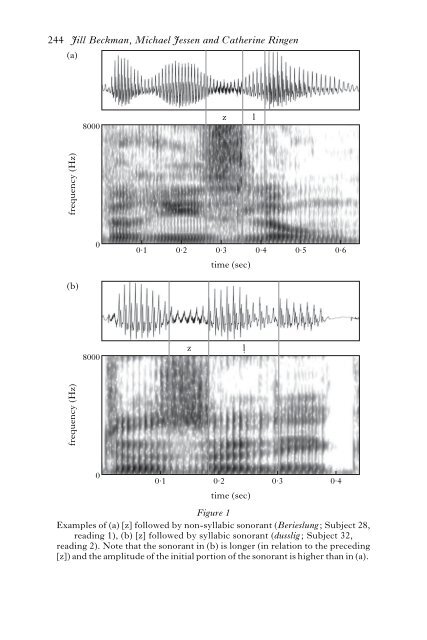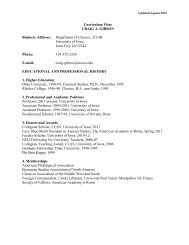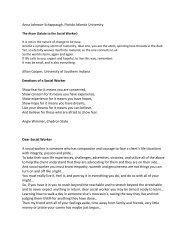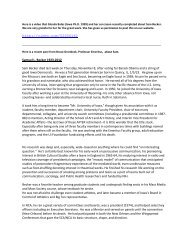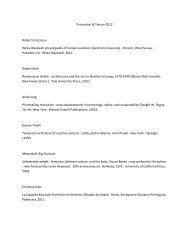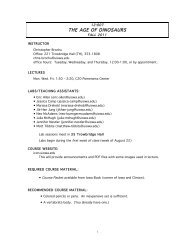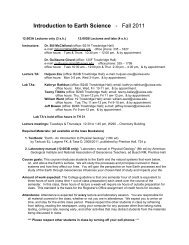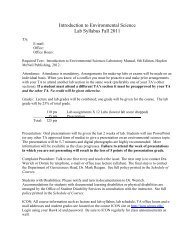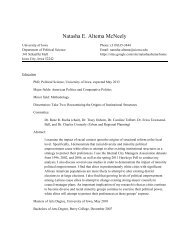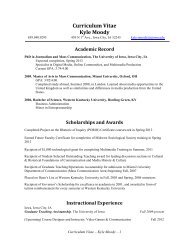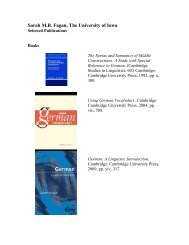German fricatives: coda devoicing or positional faithfulness?
German fricatives: coda devoicing or positional faithfulness?
German fricatives: coda devoicing or positional faithfulness?
You also want an ePaper? Increase the reach of your titles
YUMPU automatically turns print PDFs into web optimized ePapers that Google loves.
244 Jill Beckman, Michael Jessen and Catherine Ringen<br />
(a)<br />
8000<br />
z<br />
l<br />
frequency (Hz)<br />
0<br />
0·1<br />
0·2 0·3 0·4 0·5 0·6<br />
time (sec)<br />
(b)<br />
8000<br />
z<br />
'<br />
frequency (Hz)<br />
0<br />
0·1<br />
0·2 0·3 0·4<br />
time (sec)<br />
Figure 1<br />
Examples of (a) [z] followed by non-syllabic son<strong>or</strong>ant (Berieslung; Subject 28,<br />
reading 1), (b) [z] followed by syllabic son<strong>or</strong>ant (dusslig; Subject 32,<br />
reading 2). Note that the son<strong>or</strong>ant in (b) is longer (in relation to the preceding<br />
[z]) and the amplitude of the initial p<strong>or</strong>tion of the son<strong>or</strong>ant is higher than in (a).


